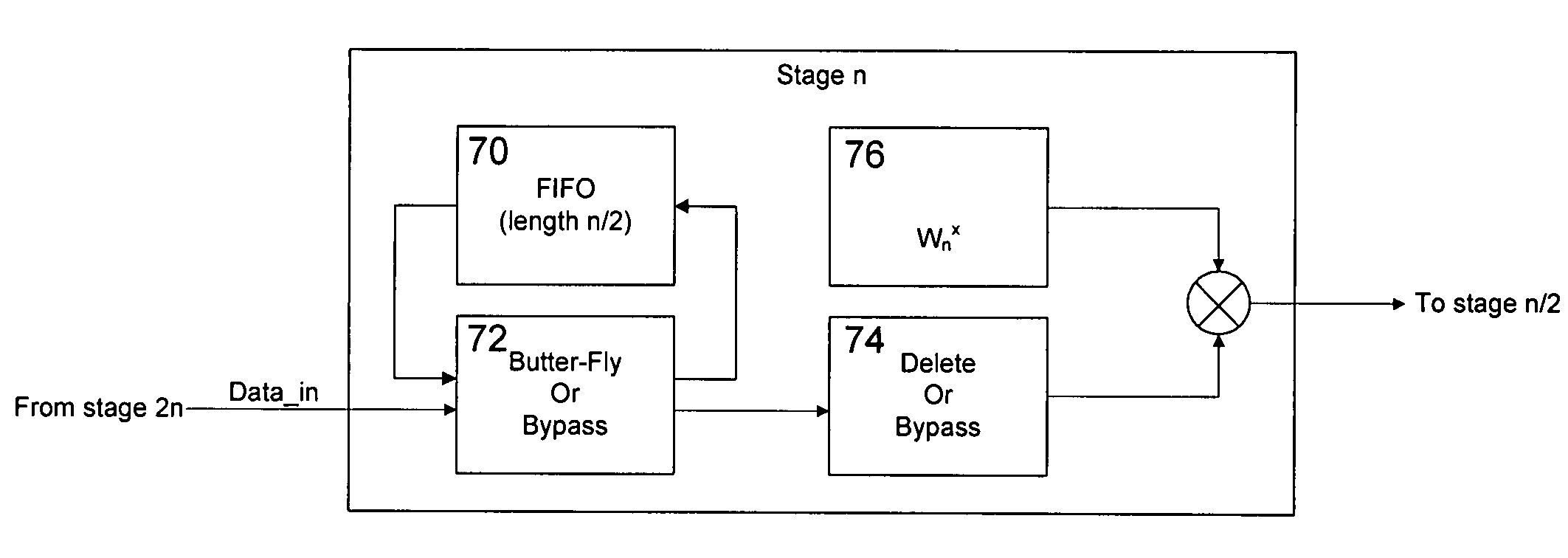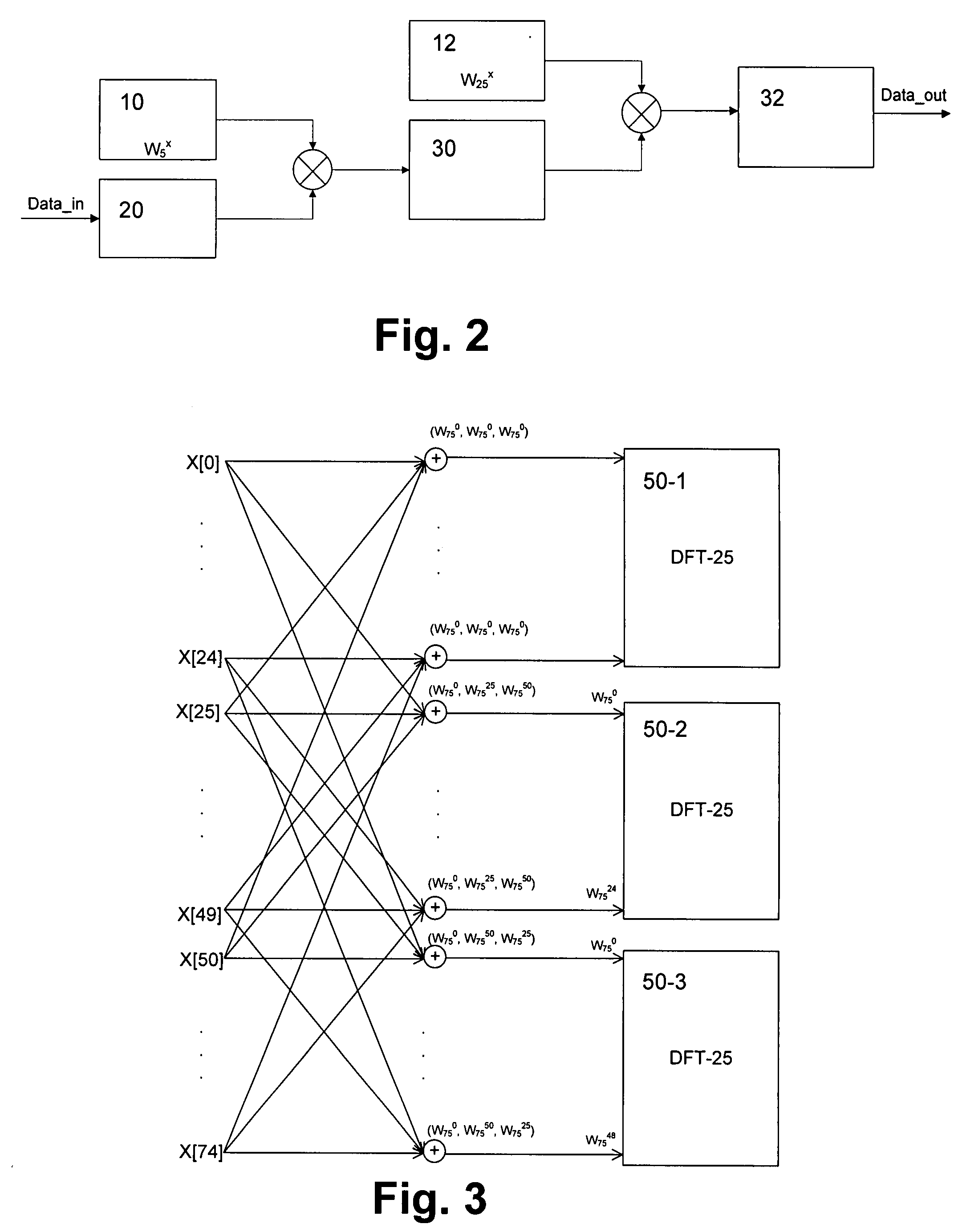Optimized multi-mode DFT implementation
a multi-mode dft and implementation technology, applied in the field of optimization multi-mode dft implementation, can solve the problems of inacceptable processing time of the order nsup>2 and process data vectors, and achieve the effect of moderate hardware complexity
- Summary
- Abstract
- Description
- Claims
- Application Information
AI Technical Summary
Benefits of technology
Problems solved by technology
Method used
Image
Examples
first embodiment
[0046]FIG. 2 shows a schematic block diagram of an implementation of the basic DFT-25 module according to the
[0047]Input data (X[i]) is supplied to a 5× or 5-times hold unit 20 and the stored samples are supplied to a first multiplier and multiplied with an assigned twiddle factor W5x generated in a first twiddle factor generating unit 10. Five successive outputs of the first multiplier are added in a first integrator unit 30 and then supplied to a second multiplier where the obtained sum is multiplied with another assigned twiddle factor W25x generated in a second twiddle factor generating unit 12. Again, five successive outputs of the second multiplier are added in a second integrator unit 32 to obtain the output data (Y[i]).
[0048]FIG. 3 shows a schematic data flow graph of a DFT-75 module according to the first embodiment based on the Cooley-Tukey algorithm and derived from three basic DFT-25 modules 50-1 to 50-3. It is again noted that not all transitions are shown with arrows f...
second embodiment
[0060]In the upper part of FIG. 7, the above DFT-75 module is shown as a combination of the block diagrams of FIGS. 2 and 4. It can be gathered that between the second and the third multiplication with the twiddle factors of the twiddle factor generating units 16 and 10, no other arithmetical operations are performed. The two multiplications with the twiddle factors can be combined into one addition and one multiplication:
a·Wx1y1·Wx2y2=a·jy1·2π / x1·jy2·2π / x2=a·j(y1 / x1+y2 / x2)·2π
[0061]As an example, the lower part of FIG. 2 shows an optimized block diagram of the DFT-75 implementation according to this embodiment with reduced number of multiplications. This implementation can be generalized for any other DFT implementation of length L, where L can be further factorized as:
L=a·b·c,
where a, b and c are positive integers. In case of the DFT-75 module, the factor “a” is 3, while “b” and “c” are 5.
[0062]FIG. 8 shows a schematic block diagram of a generalized DFT implementation according t...
PUM
 Login to View More
Login to View More Abstract
Description
Claims
Application Information
 Login to View More
Login to View More - R&D
- Intellectual Property
- Life Sciences
- Materials
- Tech Scout
- Unparalleled Data Quality
- Higher Quality Content
- 60% Fewer Hallucinations
Browse by: Latest US Patents, China's latest patents, Technical Efficacy Thesaurus, Application Domain, Technology Topic, Popular Technical Reports.
© 2025 PatSnap. All rights reserved.Legal|Privacy policy|Modern Slavery Act Transparency Statement|Sitemap|About US| Contact US: help@patsnap.com



